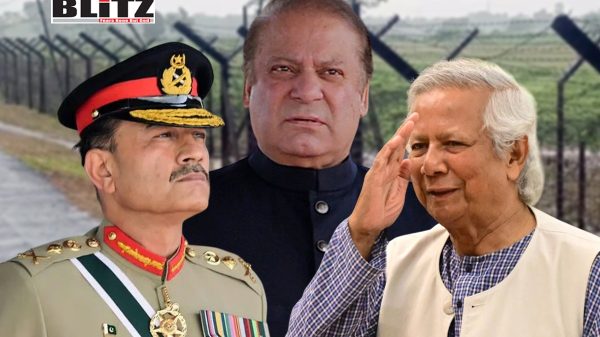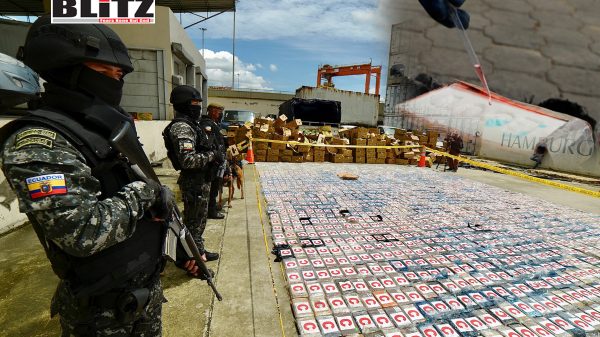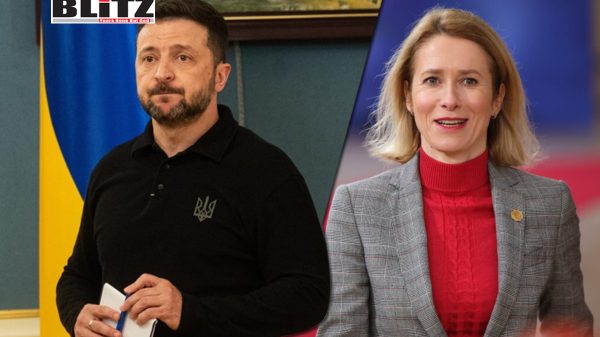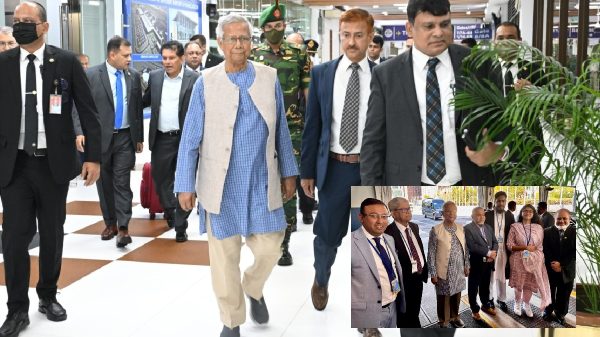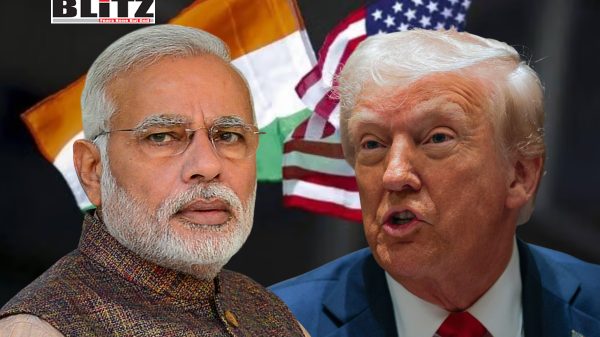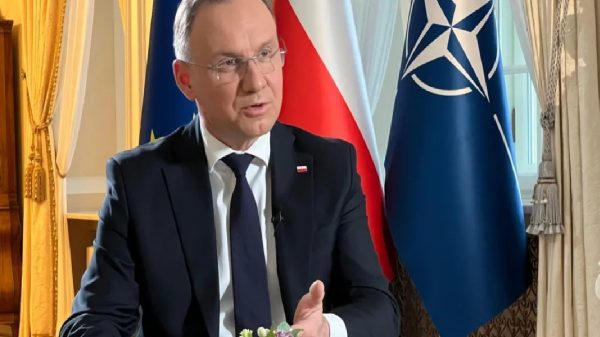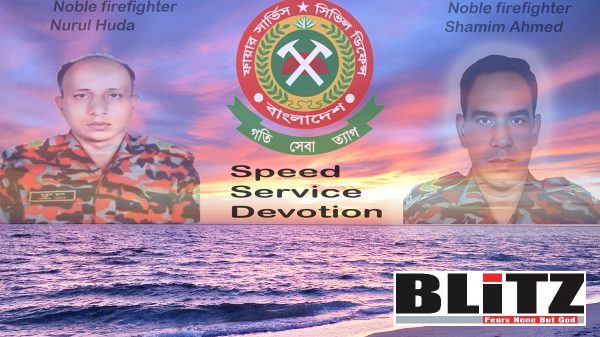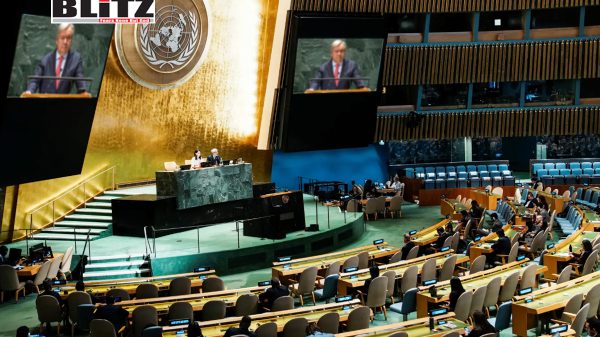Snipers in Nepal: The chilling resurgence of targeted violence in protest movements like Bangladesh
- Update Time : Tuesday, September 16, 2025
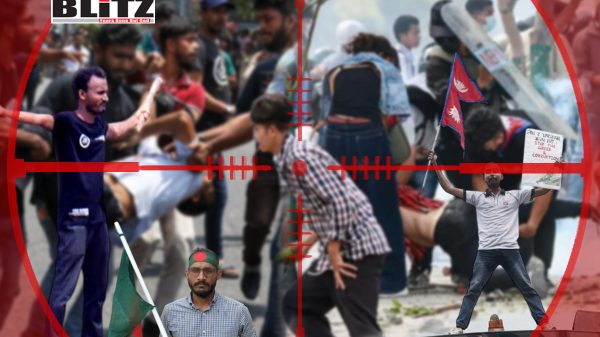
Bengali daily in India, Ei Somoy has published a revealing exclusive detailing suspicious use of sniper rifles – during the regime change operations ranging from Tripoli to Colombo and Dhaka to Kathmandu. Reading the information, anyone would raise question – who supplied these NATO weapons to protestors and trained them?
Here is details from Ei Somoy:
On September 8, chaos erupted in the heart of Nepal’s capital, Kathmandu, as a series of protests turned deadly. Five short videos circulating widely on social media captured the raw horror: young protesters being shot while demonstrating, their faces contorted in pain and disbelief. These were not faceless statistics-they were individuals, many with their shirts partially unbuttoned, wearing long-sleeved T-shirts and jeans, shouting slogans with the kind of bravery that comes from absolute conviction. Then, in an instant, bullets struck-piercing eyes, foreheads, and cheeks. Protesters fell, stumbled, and tried to flee, while their companions rushed them to ambulances.
The official count of those killed by police bullets quickly rose-from four to six, then sixteen, then twenty, and possibly higher. Each death added another layer of fear, anger, and suspicion.
The question that haunts observers and human rights activists alike is this: were these casualties caused by ordinary police operations, or was there a more sinister force at work?
A blog published on September 11 by Anamitra Chatterjee on the Kolkata-based portal Ai Samoy Online explored this question. Titled “Are there sharpshooters in Nepal too? Tripoli, Dhaka, Kathmandu are getting together in snipers,” the piece suggested a chilling scenario: highly trained snipers targeting protesters from elevated positions. Chatterjee cited a human rights activist from Dhaka-currently in hiding due to pressure from the Yunus administration in Bangladesh-who explained, “Every bullet is hitting the head or face. No one at the front line is being struck. Bullets fired from the front usually hit the chest or legs. This means the bullet came from above.”
The activist’s claim is not minor speculation. The bullets reportedly matched the specifications of 7.62 bore special ball rounds, a caliber often used in sniper rifles rather than standard police firearms. According to the blog, these sharpshooters were deliberately aiming to kill key figures in the protests and incite further unrest, creating chaos that authorities would be blamed for-even while police themselves were armed only with non-lethal plastic bullets.
The events in Kathmandu bear an uncanny resemblance to incidents in Dhaka a year earlier. In July of the previous year, Dhaka witnessed a similar pattern of violence, marked by the death of a young boy named Mugdho (Mir Mahfuzur Rahman Mugdho), who had been handing out water bottles to protesters. Amid the crowd, a bullet pierced his forehead, killing him instantly. Mugdho’s water bottle became a haunting symbol of the July Movement, representing both the innocence of the victims and the brutality of the force used against them. To this day, questions linger over the source of the bullet, leaving responsibility unresolved.
Another symbolic figure of the July Revolution was Abu Sayed, a student from Rangpur. Images of him with his arms outstretched were widely circulated, and his death became emblematic of the struggle. According to eyewitnesses, police fired three bullets into his chest from the front. Yet post-mortem reports indicated that the bullets were plastic, causing only superficial wounds. The most disturbing detail: a bullet was lodged in the back of Sayed’s head, suggesting it had come from an elevated position rather than directly from the police line. Even after his body was returned to his family, Sayed’s father reported seeing the fatal wound himself-a detail that fueled suspicions of sniper involvement.
The political context of these incidents is critical. After Prime Minister Sheikh Hasina was ousted on August 5 last year, a new interim government was established, bringing Muhammad Yunus from Paris as the chief adviser on August 8. Brigadier (retd) Sakhawat Hossain, appointed to lead the Home Department, conducted an initial investigation into the casualties. Facing the press, he remarked, “Almost all of the dead were hit in the head by a 7.62 bore bullet.” Hossain acknowledged that such bullets could not have come from conventional police weapons, which were limited to plastic projectiles. The conclusion was alarming: highly trained snipers, using military-grade rifles from high vantage points, were likely operating within the city.
Hossain was soon transferred to a less significant ministry, yet investigations continued. Over the following year, the army reportedly recovered several sniper rifles in Dhaka, some imported. Simultaneously, certain individuals openly claimed on social media to have received sniper training. These self-styled “July soldiers” were reportedly deployed from rooftops of multi-storey buildings, further intensifying the protests. While the movement gained momentum, the human cost was enormous: countless lives lost or irreparably damaged. Today, these figures remain connected to political organizations, appearing publicly alongside leaders of the NCP, who are often described as their “security managers.”
The use of snipers in protests is not unprecedented. Similar tactics were observed during the US-backed regime change operation in Libya against Muammar Gaddafi. Young Libyan snipers were trained and positioned on rooftops in Tripoli, targeting protesters while simultaneously fueling public outrage. The result was a feedback loop of violence and mass mobilization that bolstered the revolutionary movement. Observers note that the strategies employed in Dhaka-and now in Kathmandu-follow a comparable pattern: official forces are limited to non-lethal measures, while lethal force is covertly applied by trained snipers, creating a climate of fear, chaos, and political advantage for certain actors.
The parallels are stark. In Nepal, the videos of protesters being shot in the head while ordinary police deploy plastic bullets echo the tragedies in Dhaka. Young demonstrators fall, their lives abruptly ended or altered forever, while authorities’ official narratives often blame the unrest on the protesters themselves. This double tragedy-lost lives and elusive justice-leaves a deep psychological toll on survivors, families, and communities.
As Kathmandu reels from the September 8 events, broader questions about international influence, covert operations, and the use of snipers in political conflicts demand attention. Targeting protesters from above has become a method of psychological warfare, a way to manipulate public perception, and a tool to shape political outcomes with terrifying efficiency. Civilians in urban centers are increasingly vulnerable to highly calculated violence, and accountability is often obscured by layers of political and logistical complexity.
The chilling truth is that these incidents are part of a pattern of global protest management, influenced by external actors and military strategies, where the distinction between lawful policing and targeted assassination is dangerously blurred. Whether in Kathmandu, Dhaka, or Tripoli, the narrative is the same: protesters demanding change are systematically targeted by covert means, while public authorities struggle to maintain legitimacy.
For Nepal, the events of September 8 are not just a national tragedy-they are a wake-up call. Citizens, journalists, and human rights advocates must scrutinize the deployment of force in urban protests, question the sources of weaponry, and demand transparency about who is responsible for sniper attacks. The global community must also reckon with the broader implications: if such tactics are normalized in one country, they can be exported, replicated, and refined elsewhere, turning cities into zones of terror rather than spaces for civic expression.
In conclusion, the videos emerging from Kathmandu are a grim reminder of the stakes involved in modern protest movements. They underscore the lethal combination of political instability, covert violence, and manipulation of public perception. Snipers, trained and deployed from high-rise buildings, are not simply weapons-they are instruments of fear and control, shaping the trajectory of revolutions while leaving a trail of human suffering. The parallels to Dhaka, Tripoli, and other cities highlight the increasingly sophisticated and alarming nature of political suppression.
As protests continue to unfold across South Asia and beyond, the world must remain vigilant. The deaths of young protesters, the use of sniper rifles, and the manipulation of chaos are more than isolated incidents-they are a pattern, a strategy, and a warning. Accountability is not optional; it is an urgent necessity. Without it, history may repeat itself, and the blood of the courageous will continue to stain the streets of cities where hope and fear collide.


